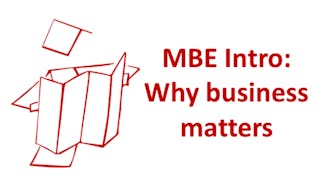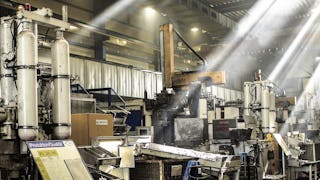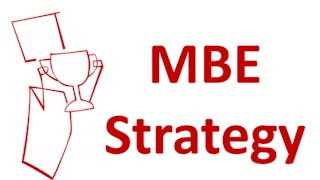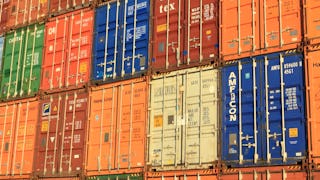Supply chain and operations are the bulk of what you see; it’s the hard work of turning ideas and strategies into tangible products for customers. How does the coffee bean turn into your Starbucks coffee? Answer: a LOT of operations



Mastering Business Essentials: Operations
This course is part of MBE Mastering Business Essentials Specialization

Instructor: John Kim
Top Instructor
Access provided by National University of Sciences and Technology
Recommended experience
What you'll learn
Explain supply chain and operations to your cousin.
Find the 20% that drive 80% of results.
Skills you'll gain
Details to know

Add to your LinkedIn profile
June 2025
See how employees at top companies are mastering in-demand skills

Build your subject-matter expertise
- Learn new concepts from industry experts
- Gain a foundational understanding of a subject or tool
- Develop job-relevant skills with hands-on projects
- Earn a shareable career certificate

There are 5 modules in this course
Supply chain is a massive topic; it describes the entire lifecycle of the product - from the raw ingredients, to the planning, manufacturing, and eventual distribution to the end customer. Remember that a cup of coffee started out as coffee beans. So, operations turns strategy into reality. Operations is difficult because it requires significant effort, coordination, risk, and trade-offs. The good news is that global trade increased 10x over the last 50 years. The bad news is that protectionism (e.g., tariffs) are on the rise and geopolitics can negatively influence free trade.
What's included
2 videos2 readings
The SCOR (Supply Chain Operations Reference guide) is a simple way to think about supply chain and organize it into buckets. Matching supply and demand “as accurately as possible” for all the different supplies, products, customers, locations. Buying all the necessary materials, equipment, labor to build bikes at the “right” quality and “right” costs. Manufacturing products “to specification” while running the factory flexibly, efficiently, and safely. Getting products to customers accurately, on-time, at lowest acceptable cost.
What's included
3 videos1 reading1 assignment
Build-to-stock products are made in advance with the goal of creating economies of scale (and lower costs). Make-to-order products are built after the order is placed, to allow for more customization and less inventory. Services are “made” and “delivered” at the same time. It requires having enough of the right people to meet the demand. Digital assets are unique because it’s easy/cheap to copy and distribute widely to the second, third. . . thousandth customer.
What's included
3 videos1 reading
There are 3 parts to this module: 1) Economies of scale matter a lot in business. “The bigger you get, the cheaper you can make your products”. This is why many businesses try to keep growing. 2) In addition to this scale, there has also been drive to improve productivity through standardization. The Toyota Production System (TPS) revolutionized how cars were made by emphasizing quality as the most important production criteria. The idea was that quality was the “first domino” that led to better flow, lower costs. 3) Lean focuses on speed and efficiency. Six Sigma focused on accuracy and reliable. Both are useful and complementary.
What's included
4 videos1 reading1 assignment
This is the last module in the specialization and it's focused on prioritization. We all know that it's easy to be distracted and waste time. It's important to focus on the “stuff that matters”. One way to do this is to focus on CTQ (what is truly critical) and also the 80/20 principle. Namely, what are the 20% of inputs that drive the 80% of outputs?
What's included
5 videos1 reading1 peer review
Earn a career certificate
Add this credential to your LinkedIn profile, resume, or CV. Share it on social media and in your performance review.
Instructor

Offered by
Why people choose Coursera for their career




Explore more from Business

Emory University

Rutgers the State University of New Jersey

Emory University

Rutgers the State University of New Jersey
¹ Some assignments in this course are AI-graded. For these assignments, your data will be used in accordance with Coursera's Privacy Notice.

